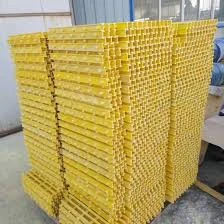
-
 Afrikaans
Afrikaans -
 Albanian
Albanian -
 Amharic
Amharic -
 Arabic
Arabic -
 Armenian
Armenian -
 Azerbaijani
Azerbaijani -
 Basque
Basque -
 Belarusian
Belarusian -
 Bengali
Bengali -
 Bosnian
Bosnian -
 Bulgarian
Bulgarian -
 Catalan
Catalan -
 Cebuano
Cebuano -
 China
China -
 China (Taiwan)
China (Taiwan) -
 Corsican
Corsican -
 Croatian
Croatian -
 Czech
Czech -
 Danish
Danish -
 Dutch
Dutch -
 English
English -
 Esperanto
Esperanto -
 Estonian
Estonian -
 Finnish
Finnish -
 French
French -
 Frisian
Frisian -
 Galician
Galician -
 Georgian
Georgian -
 German
German -
 Greek
Greek -
 Gujarati
Gujarati -
 Haitian Creole
Haitian Creole -
 hausa
hausa -
 hawaiian
hawaiian -
 Hebrew
Hebrew -
 Hindi
Hindi -
 Miao
Miao -
 Hungarian
Hungarian -
 Icelandic
Icelandic -
 igbo
igbo -
 Indonesian
Indonesian -
 irish
irish -
 Italian
Italian -
 Japanese
Japanese -
 Javanese
Javanese -
 Kannada
Kannada -
 kazakh
kazakh -
 Khmer
Khmer -
 Rwandese
Rwandese -
 Korean
Korean -
 Kurdish
Kurdish -
 Kyrgyz
Kyrgyz -
 Lao
Lao -
 Latin
Latin -
 Latvian
Latvian -
 Lithuanian
Lithuanian -
 Luxembourgish
Luxembourgish -
 Macedonian
Macedonian -
 Malgashi
Malgashi -
 Malay
Malay -
 Malayalam
Malayalam -
 Maltese
Maltese -
 Maori
Maori -
 Marathi
Marathi -
 Mongolian
Mongolian -
 Myanmar
Myanmar -
 Nepali
Nepali -
 Norwegian
Norwegian -
 Norwegian
Norwegian -
 Occitan
Occitan -
 Pashto
Pashto -
 Persian
Persian -
 Polish
Polish -
 Portuguese
Portuguese -
 Punjabi
Punjabi -
 Romanian
Romanian -
 Russian
Russian -
 Samoan
Samoan -
 Scottish Gaelic
Scottish Gaelic -
 Serbian
Serbian -
 Sesotho
Sesotho -
 Shona
Shona -
 Sindhi
Sindhi -
 Sinhala
Sinhala -
 Slovak
Slovak -
 Slovenian
Slovenian -
 Somali
Somali -
 Spanish
Spanish -
 Sundanese
Sundanese -
 Swahili
Swahili -
 Swedish
Swedish -
 Tagalog
Tagalog -
 Tajik
Tajik -
 Tamil
Tamil -
 Tatar
Tatar -
 Telugu
Telugu -
 Thai
Thai -
 Turkish
Turkish -
 Turkmen
Turkmen -
 Ukrainian
Ukrainian -
 Urdu
Urdu -
 Uighur
Uighur -
 Uzbek
Uzbek -
 Vietnamese
Vietnamese -
 Welsh
Welsh -
 Bantu
Bantu -
 Yiddish
Yiddish -
 Yoruba
Yoruba -
 Zulu
Zulu
fiberglass clarifier system for efficient water treatment and solid ...
Fiberglass Clarifier System for Efficient Water Treatment and Solid Separation
Water treatment is a critical aspect of environmental management, ensuring that water bodies are safeguarded from contaminants while providing safe water for human consumption and various applications. Among the different technological advancements in this field, fiberglass clarifier systems have emerged as an efficient solution for solid-liquid separation. These systems are designed to address the increasing demand for effective water treatment processes in various industries, including municipal wastewater, industrial effluents, and stormwater management.
At the core of any water treatment process lies the need to remove suspended solids, organic matter, and other contaminants. A clarifier serves as a primary treatment unit, allowing the sedimentation of solids by gravity. The traditional materials used in the construction of clarifiers have often posed challenges, including susceptibility to corrosion and degradation over time. However, fiberglass clarifier systems have revolutionized this aspect, offering enhanced durability and improved performance.
Fiberglass is a composite material made from glass fibers embedded in a resin matrix. This combination lends fiberglass significant advantages over conventional materials, such as concrete or steel. One of the primary benefits of fiberglass clarifiers is their resistance to corrosion, which is particularly important in environments where chemicals and other reactive substances are present. This durability ensures a longer lifespan for the clarifier, reducing the need for frequent replacements and maintenance.
The design of fiberglass clarifier systems is also optimized for efficiency. They come equipped with innovative features such as inclined plate settlers or tube settler technology, which greatly improves the sedimentation process. By maximizing the surface area for settling solids, these designs increase the overall treatment capacity of the clarifier while minimizing the footprint of the equipment. This is particularly advantageous for facilities with space constraints.
fiberglass clarifier system for efficient water treatment and solid ...

Furthermore, fiberglass clarifiers can be customized to meet the specific needs of different applications. Whether it’s treating wastewater from a municipal plant, processing industrial waste, or managing stormwater runoff, fiberglass systems can be tailored to accommodate varying flow rates and volumes. With the ability to integrate additional features such as skimmers and sludge hoppers, these systems can enhance solid separation and improve overall performance.
Another significant advantage of fiberglass clarifier systems is their lightweight nature. Being considerably lighter than traditional materials means that installation is often more straightforward, requiring less heavy machinery and labor. This not only leads to reduced installation costs but also expedites the commissioning process, allowing for quicker deployment in water treatment facilities.
Moreover, the environmental benefits associated with fiberglass clarifier systems cannot be overlooked. By effectively removing solids and minimizing the need for chemical additives, these systems contribute to cleaner effluents released back into natural water bodies. This aligns with the goals of sustainable water management practices, promoting ecological balance and compliance with regulatory standards.
In conclusion, fiberglass clarifier systems represent a modern and efficient approach to water treatment and solid separation. Their durable construction, efficient design, and adaptability make them a suitable choice for a variety of applications. As industries increasingly focus on sustainability and cost-effectiveness, the adoption of fiberglass clarifiers is expected to grow, ultimately leading to improved water quality and environmental preservation. The future of water treatment lies in innovative solutions like fiberglass, paving the way for cleaner, safer water for generations to come.









